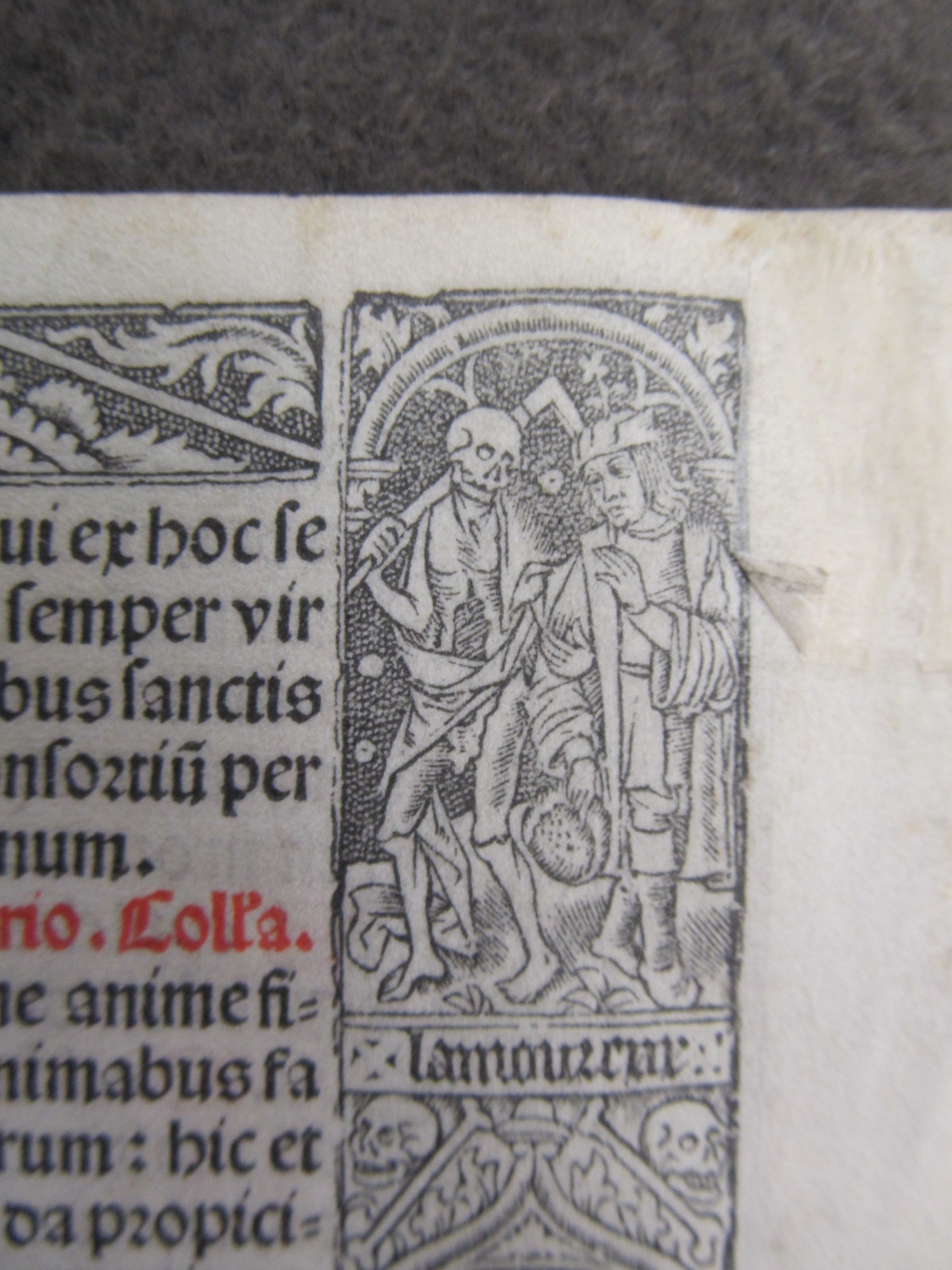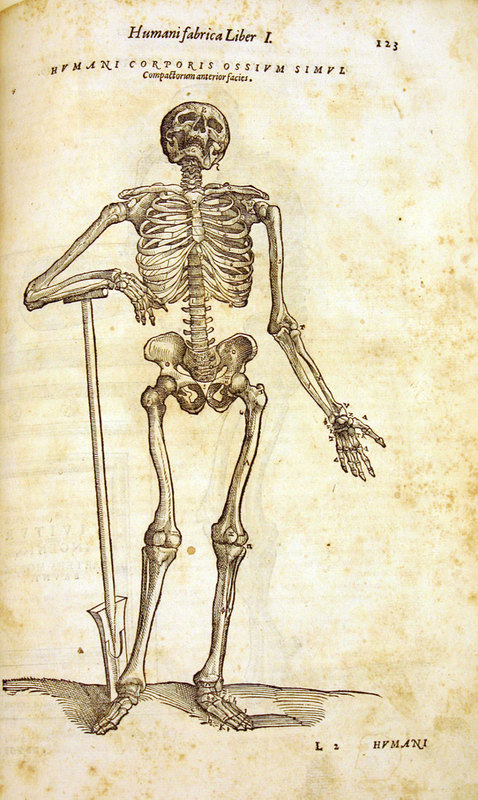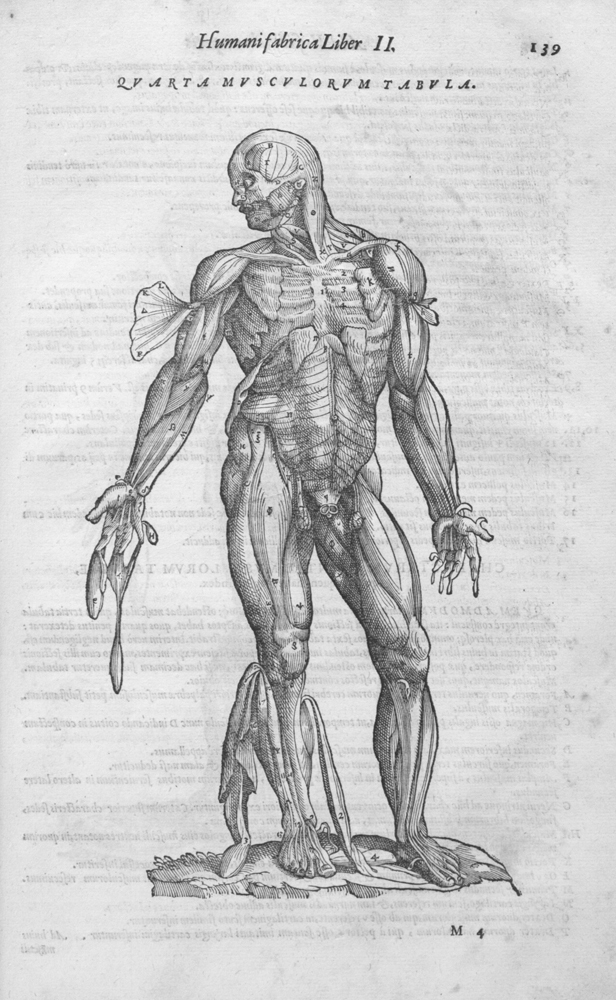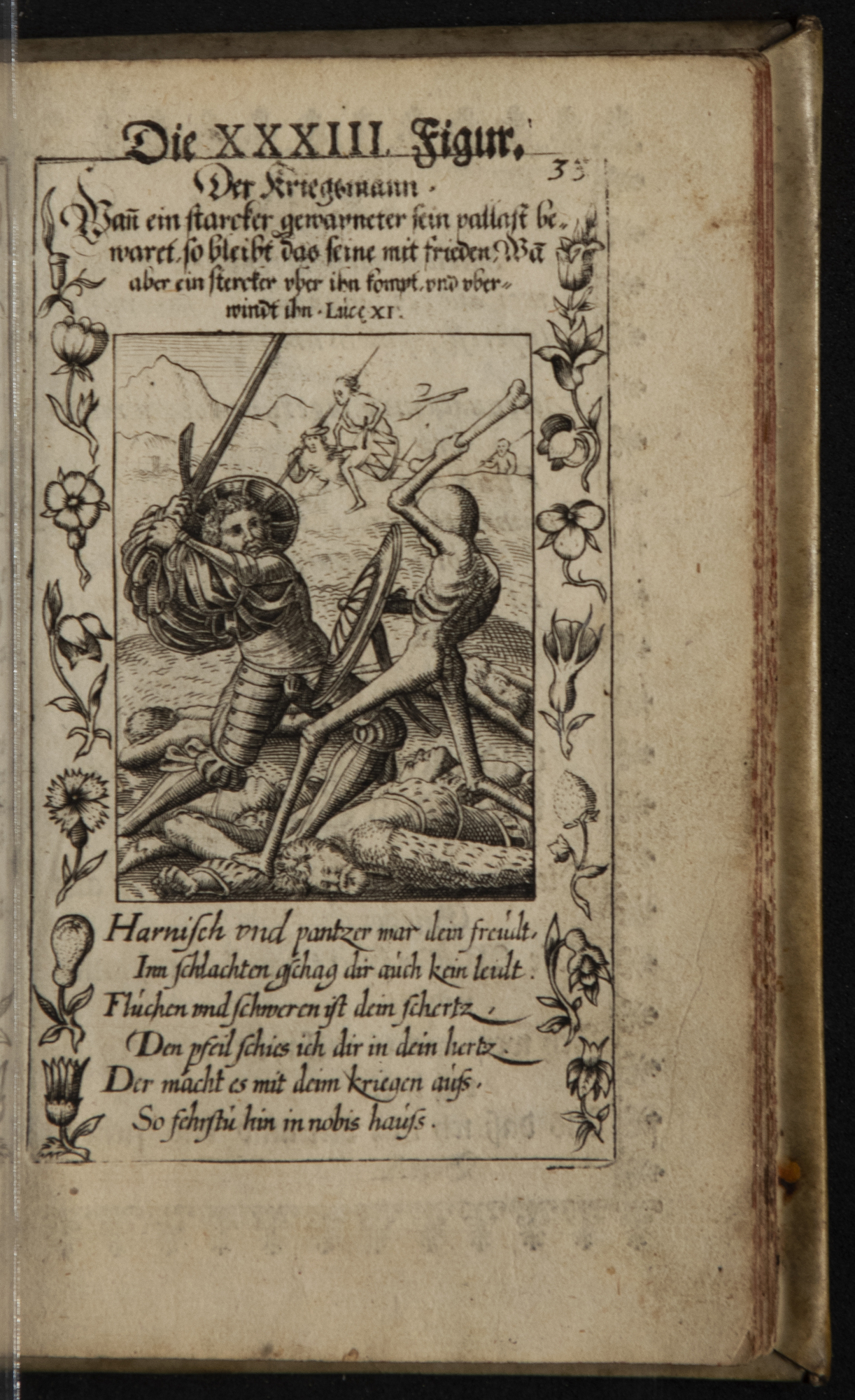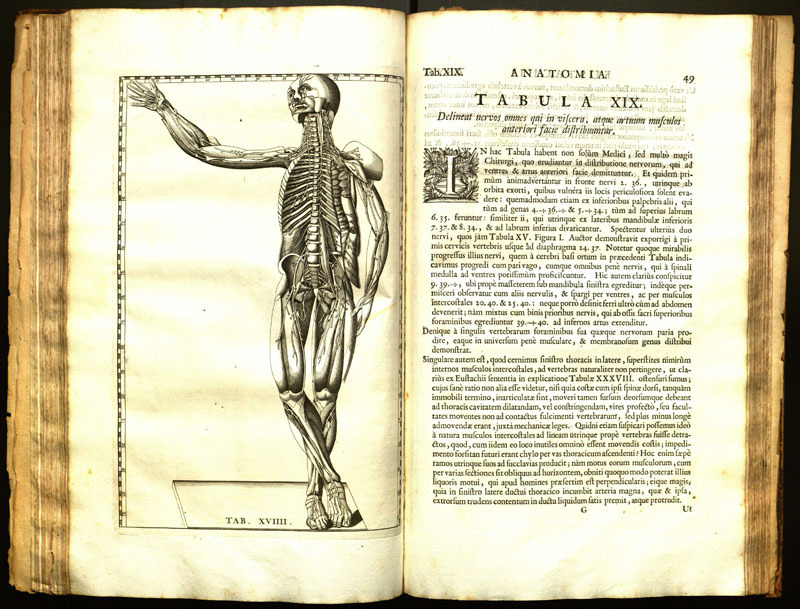No Bones About It: An exhibit of spooky skeletons
Codices de Oribus
For centuries, Latin was the language of the educated in Europe, and so the Latin-language books in this exhibit cover a broader range of topics than the other languages do. We have a 15th-century book of hours that incorporates the dance of the dead into the margins, our two 16th-century editions of Vesalius’s anatomy books, a 17th-century pocket-size edition of Holbein’s woodcuts, and an 18th-century edition of another 16th-century anatomist’s work. Religion, science, and art: skeletons are in all of them!
[Hore presentes ad usum Sarum impresse fuerunt Parisius per Philippu [m] pigouchet].
BX2080 .A2 1498
Printed on parchment in France, these two leaves from a 15th-century book of hours are by metal engravings with scenes from the dance of death on the outer edge of each page. Printing like this was usually done on paper, both because of cost and practicality: paper takes impressions from the printing press far better than parchment does.
De humani corporis fabrica libri septem (1555 edition).
Andreas Vesalius (1514-1564)
QM21 .V418 1555
Andreas Vesalius is most famous today for his public dissections, which he would perform while lecturing at the University of Padua. He proceeded to publish his findings in De humani corporis fabrica libri septem (1543). The first of the seven chapters was dedicated to skeletons, an unusual choice on Vesalius’s part. This 1555 edition was revised to space the text farther apart to make it easier to read.
De humani corporis fabrica libri septem (1568 edition).
Andreas Vesalius (1514-1564)
QM21 .V418 1568
This smaller edition of Vesalius’s anatomy was published after Vesalius’s death, and the woodcuts had to be redone to accommodate the smaller format. Despite this, the illustrations remain of a high quality, a crucial aspect of Vesalius’ book.
Icones mortis sexaginta imaginibus, totidemq[ue] inscriptionibus insignitæ, versibus quoq[ue] latinis et novis germanicis illustratæ.
N7720.H6 V6 1648
The illustrations in this book are all copies of Hans Holbein’s woodcuts, whether directly or from other copies. These may be the first copperplate copies of Holbein’s artwork done. The small size of the book suggests it may have been intended as a pocket-size edition.
Tabulae anatomicae clarissimi viri Bartholomaei Eustachii.
Bartolomeo Eustachi (died 1574)
QS .Eu79t 1722
Born in the beginning of the 16th century, Bartolomeo Eustachi was an Italian anatomist and professor of anatomy at the papal university Sapienza (today the Sapienza University of Rome). After receiving special dispensation to dissect human cadavers, he was able to make many important discoveries, especially in the areas of the kidneys, circulatory system, inner ear, and dentistry.
